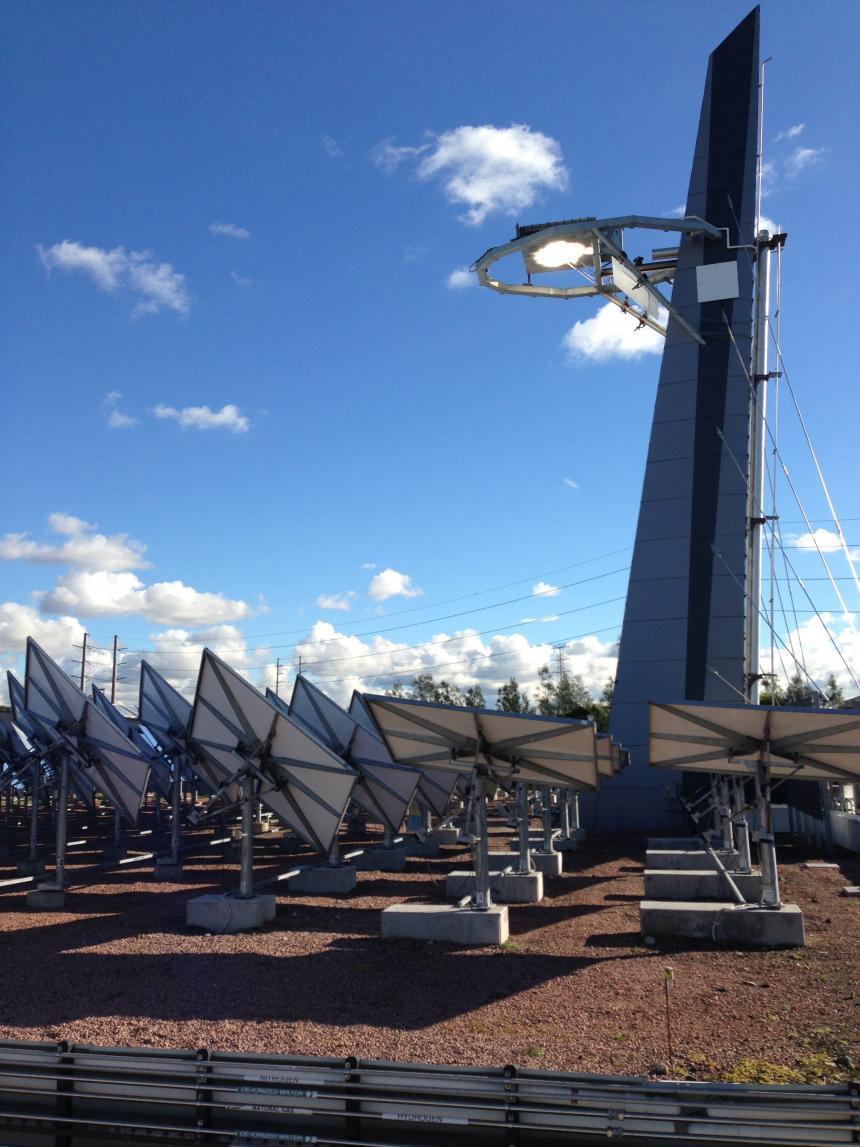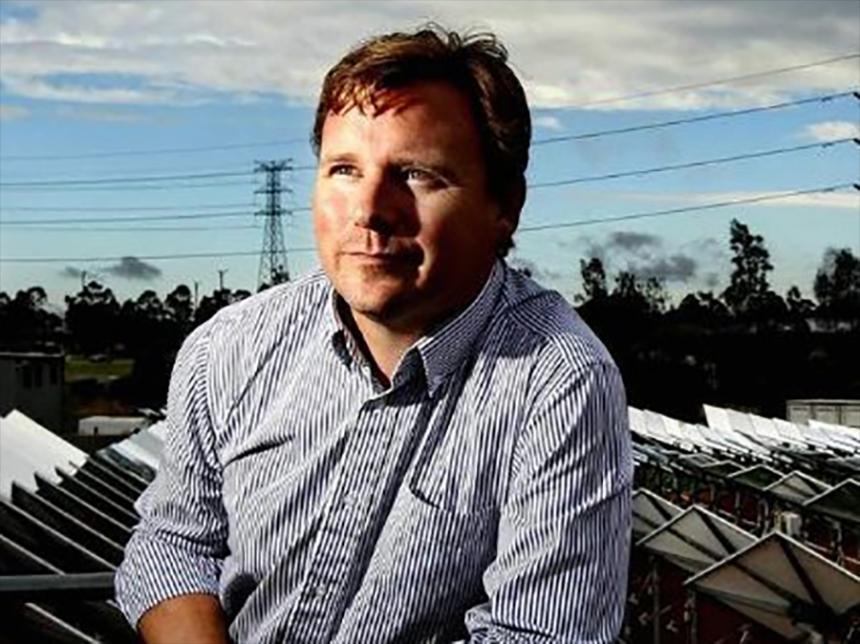Solar Reforming of Natural Gas
Embedding solar thermal energy in syngas can enable a smooth transition to solar enhanced fuels in existing processes.Mr Robbie McNaughton, Program 2 Leader
Solar reforming is the storage of solar energy in chemical form by converting natural gas to syngas. By reacting the natural gas with steam and/or CO2, the energy content of the fuel is increased by up to 20-30%. Since the upgrade is achieved with solar energy, the final fuel has less nett carbon emissions.
Solar reforming is a good option for industry because existing plant equipment doesn’t have to be radically altered and, for many processes, the plant operators can easily switch between syngas and natural gas if they need to.
The project team has already been researching solar thermal for many years. In particular, CSIRO Solar Thermal has developed designs, analysed engineering costs, and even run scaled up projects to half a megawatt. This work is the starting point for Program 2.
-
What we're doing

CSIRO’s technology for methane steam-reforming using CST steam includes the 200 kW pilot scale tests on the CSIRO tower.
In Program 2, we want to find out whether generating syngas through solar reforming is an economically feasible option for the Bayer alumina process.
The viability of solar reforming is influenced by solar resource and weather, which changes from site to site. For retrofit situations the site is fixed, while for greenfield sites new opportunities may become available with better solar resource conditions.
The reactions needed for solar reforming occur at temperatures of around 700 to 900ºC. To achieve this in our technology development programs, we are using CSIRO’s solar tower system.
A critical aspect of our program is to assess how to best store syngas. Storage is necessary for a plant to cope with intermittent solar availability because the Bayer process operates 24/7. Options could include storage in pipes, large tanks or underground. Alternatively, it could be more feasible to export the syngas to other users than to store it. We will explore all options for the Australian context.
Program 2 bridges across the two other programs – Low Temperature Process Heat and High Temperature Calcination. We are supporting them by answering questions such as how changing the fuel from natural gas to syngas alters the chemistry of the calcination process.
-
Aim
- To quantify potential benefits to the quality of the product from calcination with syngas instead of natural gas, through reduced contamination to the alumina product from species such as soot
- To provide reliable estimates of the technical and economic feasibility of novel proposals for low-cost storage of syngas, including underground storage, under conditions of relevance to alumina production, accounting for access, operational and safety issues in the plant
- To develop process models of solar reforming and the Bayer alumina process, accounting for impacts of fuel composition on product quality, syngas storage, the use of a natural gas back-up supply and solar resource variability
- To identify the highest value opportunities for implementing solar reforming into the Bayer alumina process accounting for all the above issues for various scenarios of natural gas price, carbon price and new market opportunities
- To develop a plan for demonstrating a novel approach to syngas storage at an industrially realistic scale and advance the technology toward TRL-7.
The intended outputs are:
- Process and techno-economic models to reliably calculate the economic viability of pilot-scale concentrating solar thermal (CST) to be used for the natural gas reforming part of the Bayer process
- A report identifying the high value technology configurations, value propositions for improved product quality and preferred methods of storage of heat and/or syngas to accommodate solar resource variability
- A plan to demonstrate the suitable scale and optimal method for syngas storage.
-
Why this program is needed
Solar reforming to generate syngas has already been demonstrated, but for the Bayer alumina process we don’t yet know the:
- economic feasibility of solar reforming
- impact of alternative storage options on economic feasibility
- scenarios of policy settings under which the processes are most attractive.
Despite CSIRO’s prior work to demonstrate this technology at half a megawatt, there remains technical risk in scaling up to the 1000 MW required by alumina processing plants. We are looking at new catalysts and techniques to reduce that risk.
Like natural gas, syngas is a combustible fuel. But syngas has a different volumetric energy content and lower emissivity. It requires 3-4 times the volumetric flow to achieve similar energy inputs to natural gas. While commercial solutions to this are available, little information is available on how this influences the details of the calcination process. The implications on economics need to be assessed. This work is being undertaken with The University of Adelaide’s well-established process assessment facilities.
-
Progress
High level process models of solar reforming integrated into the Bayer process
The team has assessed options to integrate solar reforming into the Bayer process, and has developed a process model using the commercial simulation package UNISIM.
A preliminary assessment of syngas and thermal storage options has been completed. The four types of syngas storage systems that we are likely to consider are:
- gasometer (low pressure)
- above ground
- pipeline
- underground caverns.
We have also assessed the relevance of product quality. In the case of steam boilers, syngas may be used if the burners are modified to achieve the higher volumetric flows that syngas requires. However, less information is available on how the change to the fuel will influence the calcination. We have begun detailed assessments of the calcination process under a range of conditions for which data is not presently available.

